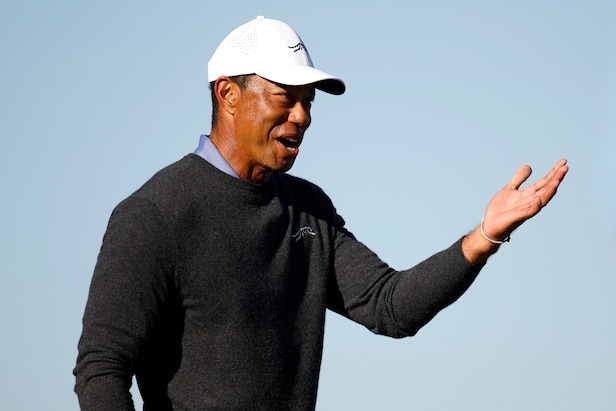Is the South Korean golf boom over on the LPGA Tour? – Australian Golf Digest

- by Admin
- April 17, 2024

THE WOODLANDS, Texas — In South Korea, the generation has been called “Seri Pak’s Kids,” because it’s a group of young women who became inspired by the golf star’s ascendance with her watershed 1998 U.S. Women’s Open victory. In the decade that followed, huge amounts of girls took up the game, and the repercussions would be felt when the nation’s flag became a dominant power on LPGA Tour leaderboards.
Over the last 26 years, the country has produced two LPGA Hall of Famers in Pak and Inbee Park. It has had five Rolex Women’s World Rankings No. 1s—Park, Jiyai Shin, So Yeon Ryu, Sung Hyun Park, and Jin Young Ko—the most of any country since the inception of the rankings in 2006. And South Korea has had 18 players combine to win 32 majors, with Inbee Park holding a remarkable seven—putting the 35-year-old at seventh all-time on the LPGA.
But South Korea’s preeminence has faded noticeably over the last two seasons. The 2022 and 2023 campaigns were the first in more than 20 years that South Koreans won fewer than 20 percent of the LPGA’s events, and the trend has continued this season, with no champions from the country in the eight events played.
MORE: Nelly Korda looks to continuing her winning run at Chevron
Heading into this week’s Chevron Championship, the first LPGA major of the year, the falloff is even more stark at the tour’s biggest events. Since 1998, South Koreans have won 28 percent of the majors, but in the last three years, only In Gee Chun has captured one—the 2022 KPMG Women’s PGA Championship.
What happened to make such a golf-loving country take such a dive? The theories are both quantifiable and speculative. Pak herself asserts that it’s simply a predictable cycle. Others point to the COVID-19 pandemic forcing many Asian players to stay home, and they got comfortable there. Further, the various Asian tours offer good prize money and more television exposure, which can translate into better player endorsement deals. Also, golfers from other Asian countries have provided more competition on the LPGA.
Even looking at the field for this year’s Chevron, which begins on Thursday, there are fewer South Korean players. Ten years ago, at the then-Kraft Nabisco Championship (now Chevron), 26 South Koreans were among the 114 competitors. And more of them (21) made the cut than there are South Koreans—20—in the field this week among 132 players.
“So, less player, then maybe less chance, but still we are strong,” two-time LPGA winner Mi Hyang Lee said.
MORE: Chevron Championship Power Rankings
That is becoming debatable, at least when it comes to the pipeline from South Korea to the LPGA. Of the last 33 first-time winners on tour, dating back to 2020, Hae Ran Ryu’s 2023 Walmart NW Arkansas Championship victory is the country’s lone triumph.
In Gee Chun is the last South Korean to have won a major, at the 2022 KPMG Women’s PGA Championship.
Rob Carr
Meantime, South Korea is at risk of doing something it hasn’t in the Olympics—not sending four players. Countries can have up to four golfers in the field if they’re all in the top 15 in the World Rankings, and in the last two Olympics, the country maxed out. All of its players were ranked in the top 10 in the world at the time, and in 2016 Inbee Park won her country a gold medal.
But going into this summer ahead of the Paris Olympics, with the cutoff for making it looming on June 24, South Korea has only three players eligible—Jin Young Ko (sixth), Hyo Joo Kim (ninth), and Amy Yang (15th).
Pak, who coached her country’s Olympic women’s golf team the last two times, acknowledges that it might be South Korea’s time to fall off. “It’s natural, actually,” she said. “Some ups and downs anyway. It has [been] a lot of pressure for a long time.”
The drop-off starts with the winding down of the generation of golfers, now in their 30s, who adored Pak. Inbee Park was elected by her country to the IOC’s Athlete’s Commission, had her first child last year, and hasn’t competed on tour since the middle of 2002. Ryu, 33, a two-time major champion, has announced she is retiring after this week. Shin, 35, who won the 2008 and 2012 Women’s British Open, now primarily competes on the Japanese LPGA after she resigned her LPGA membership in 2014.
The next wave of players who did not witness Pak’s U.S. Women’s Open victory has won majors at a lesser rate and is beginning to cut back on U.S. appearances. Chun, 29, leads with three major titles (the last being the 2022 Women’s PGA), while Ko and Sung Hyun Park have two. Park, 30, has yet to make any appearances on the LPGA in 2024 despite having status from her Women’s PGA title. Ko, 28, will make her first domestic start at the Chevron this week.
South Korea’s decrease in wins converges with other nations having their equivalent Seri Pak generations starting to enter the LPGA. Japanese journalist Reiko Takewara, who has covered the LPGA for 25 years, explained that Japan is going through its Ai Miyazato generation.
Miyazato became the first player from Japan to become the No. 1 player in the World Rankings in 2010 and retired from playing on the LPGA in 2017. Since then, Japan has had its first two major champions in Hinako Shibuno (2019 Women’s British) and Yuka Saso (2021 U.S. Women’s Open). Japan has a record nine members in the LPGA this season, including six-time winner Nasa Hataoka and 2020 Olympic silver medalist Mone Inami.
It’s not just Japan on the rise.
“I don’t see that Korea is going down, but other countries, especially from Asia, are getting better now,” Takekawa said.
China and Thailand, in particular, have emerged. Shanshan Feng became the first-ever LPGA major champion from China in 2012 and World No. 1 in 2017. Ruoning Yin was the second Chinese major winner and the country’s second World No. 1 last year. Xiyu Lin is a top-10 player in the world.
Ariya Jutanugarn became the first Thai to win a major at the 2016 Women’s British and the first from her country to be No. 1 in 2017. Patty Tavatanakit became the second Thai major champion at the 2021 ANA Inspiration (now Chevron). Atthaya Thitikul became the second-ever No. 1 from Thailand in 2022.
A further incentive for South Korean players to stay home is the rise of the Korean LPGA. Since 2009, the tour has grown from 18 tournaments to 30, with the average purse increasing 270 percent from around $337,000 to $779,000 converted from won to U.S. dollars. That’s a higher rate than the LPGA’s 208-percent growth over the same span, though the American-based tour still boasts a robust $3.5 million average prize money at its events.
The smaller KLPGA purse sizes are supplemented by South Koreans’ additional potential sponsorship opportunities on their home tour. According to Lee, South Korean companies prefer to sponsor players from their home country who stay in their homeland for TV exposure reasons. If players head over to the U.S., with a 13-hour time difference between Seoul and the U.S. East Coast, the LPGA’s broadcast hours on Joongang Tongyang Broadcasting Company (JTBC) are often during inconvenient viewing hours. Chevron’s final round will air live from 7 to 10 on Monday morning.
The KLPGA is broadcast on Seoul Broadcasting System (SBS) Golf, with additional exposure during reasonable TV windows. This week’s KLPGA Nexen Saint Nine Masters final round will start at 10 a.m. on Sunday.

South Korean Jin Young Ko has amassesd 15 wins on the LPGA Tour.
Jeff Haynes
JTBC doesn’t send out its camera and production crew to LPGA tournaments; instead, it utilizes the Golf Channel’s feed and provides Korean commentary. With the telecast’s focus on a U.S. audience, South Korean players may not get as featured as they would if JTBC were directing the show.
“There’s not many Korean players on TV as well,” Lee said. “So, hopefully Golf Channel can help the Korean player.”
Additionally, travel across the world is a challenge. Trips to play in U.S. LPGA events are a long haul, while competing on JLPGA is highly convenient, with Tokyo and Seoul in the same time zone. The JLPGA’s average purse over its 37 events, converted from yen to U.S. dollars, is approximately $750,000, offering a comparable amount of money to the KLPGA.
Chun pointed out the impact COVID-19 had on players staying home, but she hopes the next generation will be more ambitious. “I’m on tour here [on the LPGA], but I wish we all play well,” she said. “And then, give the juniors good [inspiration] as well.”
Jiyai Shin is trying to get more South Koreans to play on the LPGA, even though she left more than a decade ago. When talking with younger players on the Japan tour, the former No. 1 explains that they may not grow as players as much if they remain close to home. “If you stay in Korea, our thinking, our seeing, still keep narrow,” she explained.
Shin competed in her first non-major U.S. event since 2013 at the Fir Hills Seri Pak Invitational in March, in part to potentially gain World Ranking points (she’s 19th at the moment) for a bid at the Olympics. A victory on the LPGA, she contends, could be a chance to provide inspiration for more South Korean golfers.
“That’s why I say this is my turn to influencing to the other young golfers,” Shin said. “Because, look at me, I’m still challenging [myself], I keep make the noise to come over, come over. It should maybe touch their heart.”
This article was originally published on golfdigest.com
The Latest News
-
December 22, 2024Zheng to skip United Cup, focus on Aussie Open
-
December 22, 20242024 runner-up Qinwen Zheng pulls out of Australian Open lead-in event
-
December 22, 2024Cricket Australia ‘disgraced’ by fans after ’embarrassing’ BBL visual; Sam Konstas flops before potential debut vs India
-
December 22, 2024‘I want to be out there’: Webster’s long wait for Test debut could be over with Marsh’s all-round capability clouded
-
December 22, 2024China’s Zheng to skip United Cup, needs ‘extra rest’ ahead of Australian Open





